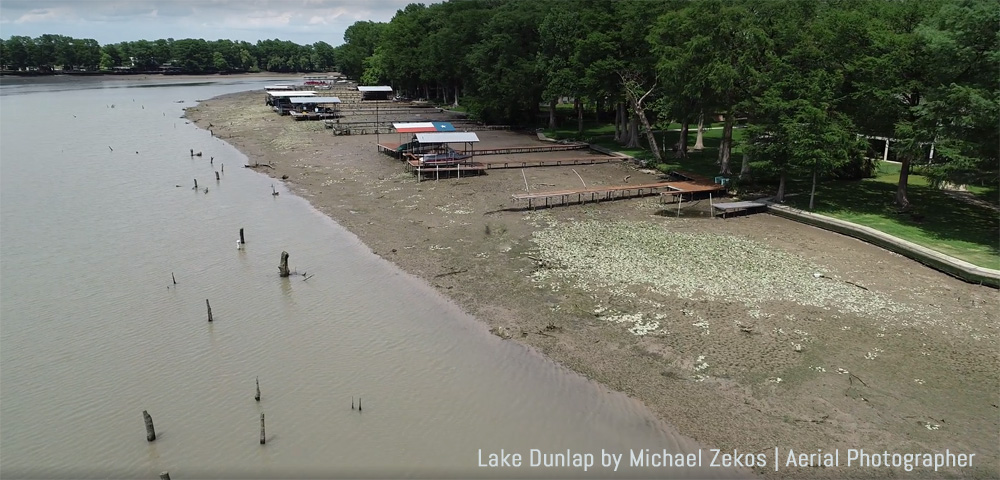
GBRA Takes Steps To Drastically Reduce Water Levels In Lakes Due To Aging Dams
In an effort to ensure the safety of the surrounding communities, the Guadalupe-Blanco River Authority (GBRA) will begin a systematic drawdown of the Guadalupe Valley Lakes on September 16, 2019. Third-party engineering assessments have determined a drawdown is the only available option for minimizing the risks associated with the aging dams.
“Safety is our top priority. We understand this is an unpopular decision, but one that we feel is unavoidable given the dangers associated with these dams,” said GBRA General Manager and CEO Kevin Patteson. “GBRA is committed to working closely with the lake associations and the community to mitigate the impact of this difficult, but necessary decision.”
GBRA has coordinated with the Texas Parks and Wildlife Department to devise a dewatering plan designed to minimize impacts to the environment. The dewatering will begin at the southern-most lake, Lake Gonzales, on September 16, and continue upstream to Meadow Lake, Lake Placid and Lake McQueeney.
The drawdown is expected to take three days per lake with the dewatering of all lakes completed by the end of September, barring any unforeseen delays. GBRA is making efforts to communicate directly with affected property owners providing advanced written notice by mail on August 16 and additional written communications with specific information about the drawdown before it begins.
The hydroelectric dams that form the recreational lakes along the Guadalupe River have surpassed the end of their useful life at more than 90 years old.
Over the past several years, GBRA has instituted a variety of safety measures – including adding signage and buoys, establishing and extending restricted zones around the dams and installing real-time monitoring cameras as well as sirens and public address systems – to warn people of the hazard.
Despite these efforts, monitoring systems continue to capture people within the restricted areas close to – and in some instances on top of – the dams, intensifying public safety concerns.
Despite regular maintenance – including significant repairs made to the dams following the floods of 1998 and 2002 – assessment by nationally recognized engineering firm Black & Veatch has indicated the original structural steel components at each of the dams are compromised.
Following the spillgate failure at Lake Wood in 2016, Freese and Nichols, Inc. identified the cause of the failure and GBRA began emergency repairs to address this issue at other dams.
While the failures at Lake Wood and Lake Dunlap were both due to deterioration of original steel components, the failure at Lake Dunlap was attributed to an entirely different issue than the failure at Lake Wood, intensifying concerns surrounding the unpredictability of spillgate failures.
Ensuring the long-term sustainability of the dams is a community endeavor. GBRA is working in partnership with the Guadalupe Valley Lakes lake associations and affected residents, as well as city and county officials, to determine the best course of action for identifying, funding and completing the necessary replacement of the dams.
A dedicated website, GVLakes.com, has been established to keep the community updated of this evolving situation and provide contact information for key stakeholders.






